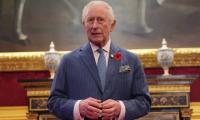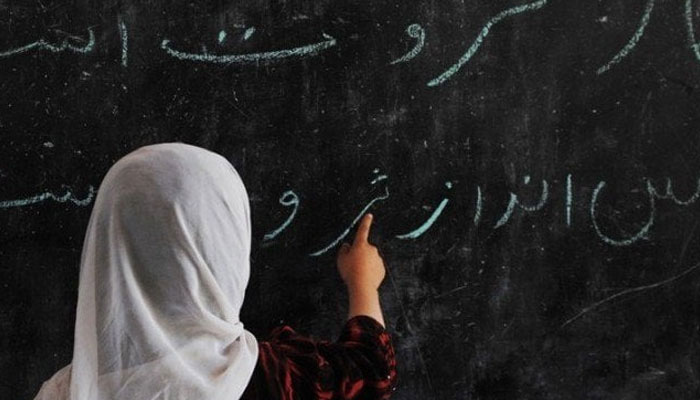A language of your own
Fostering multilingualism is essential for preserving identity and promoting inclusivity
For decades, Pakistan has pursued an official policy of promoting Urdu as a national language to encourage harmony and cohesion. The underlying belief is that a common language fosters national unity. However, the pursuit of uniformity should not come at the cost of diversity and difference. In a nation as rich in cultural and linguistic heritage as Pakistan, fostering multilingualism is essential for preserving identity and promoting inclusivity. As we mark International Mother Language Day today, it is worth reflecting on Pakistan’s linguistic landscape. More than 70 languages are spoken across the country, representing a tapestry of cultures and histories. Yet, many of these languages face the threat of extinction. According to Unesco, 27 languages in Pakistan are endangered, with 18 of them native to Khyber Pakhtunkhwa, former Fata and Gilgit-Baltistan. The reasons range from the small size of native communities to geographical isolation, political marginalisation and even displacement due to conflict. Among these endangered languages is Yidgha from the Chitral district, now spoken by fewer than 5,000 people. In the same region, Urmari too teeters on the brink of extinction due to displacement caused by military operations.
With each dying language, we lose centuries of accumulated knowledge, tradition and identity. Pakistan’s struggle with issues of identity and ethnicity is linked to its historical reluctance to fully embrace its diversity. The insistence on a singular national identity, predominantly defined by Urdu, has contributed to feelings of alienation among ethnic and linguistic minorities. Pakistan’s education system reflects this exclusionary approach. Despite the existence of over 70 languages, only Urdu and English are given full official recognition. This linguistic hierarchy is directly linked to Pakistan’s poor educational outcomes. According to Early Grade Reading Assessment tests conducted in 2013, most students in Pakistan could not fully read a 60-word passage in Urdu, let alone comprehend it. The current linguistic exclusion in the country contributes to educational failure, social stratification and limited economic opportunities, trapping people outside an Anglo-Urdu bubble that is far smaller than it appears.
The solution lies in embracing multilingualism and promoting linguistic diversity within Pakistan’s education system. Studies have shown that children learn best in their mother tongue, particularly in early education. Recognising this, some educationists say that Pakistan should introduce regional languages as mediums of instruction alongside Urdu and English. Regional languages could be offered as subjects at all educational levels, including in provinces where they are not traditionally spoken. Pakistan must realise that accepting all languages, big and small, as equal in standing is not a threat to national unity. On the contrary, it is a means of fostering national integration and social harmony. Our diverse linguistic landscape is a reflection of our cultural wealth. It is time to shed the fear that multilingualism weakens nations. In fact, nations that embrace their linguistic diversity are stronger, more cohesive, and more resilient. By promoting mother languages and encouraging multilingual education, Pakistan can build a more inclusive society that celebrates its rich cultural heritage.
-
 Tom Blyth Explains Rationale Behind Choosing 'lighter' Roles
Tom Blyth Explains Rationale Behind Choosing 'lighter' Roles -
 Prince Harry Wants King Charles To Open His Event
Prince Harry Wants King Charles To Open His Event -
 Buckingham Palace Seeks New King Charles Aide With A Warning About AI Use
Buckingham Palace Seeks New King Charles Aide With A Warning About AI Use -
 Charlie Heaton Shares His Two Cents On Popular 'Stranger Things' Theory
Charlie Heaton Shares His Two Cents On Popular 'Stranger Things' Theory -
 Prince Harry Turns Towards Manipulation For Security: ‘Whoever Is Behind It Realise How Counterproductive You Are’
Prince Harry Turns Towards Manipulation For Security: ‘Whoever Is Behind It Realise How Counterproductive You Are’ -
 ‘Exhausting’ Meghan Markle Becomes Delusional As Alienation Threatens To Grow
‘Exhausting’ Meghan Markle Becomes Delusional As Alienation Threatens To Grow -
 Gracie Abrams Claims To Be 'beyond Ready' For Third Studio Album
Gracie Abrams Claims To Be 'beyond Ready' For Third Studio Album -
 Katy Perry Plans To Capitalize On Her High-profile Relationship With Justin Trudeau
Katy Perry Plans To Capitalize On Her High-profile Relationship With Justin Trudeau -
 Kate Middleton Praised For Keeping Children's Lives Normal
Kate Middleton Praised For Keeping Children's Lives Normal -
 AJ Michalka Reveals How Joe Jonas Breakup Happened
AJ Michalka Reveals How Joe Jonas Breakup Happened -
 Elle Fanning Drops A Hint About Her Role In Upcoming 'Hunger Games' Film
Elle Fanning Drops A Hint About Her Role In Upcoming 'Hunger Games' Film -
 Jenny McCarthy Makes Blunt Statement On Use Of AI: 'Red Flag'
Jenny McCarthy Makes Blunt Statement On Use Of AI: 'Red Flag' -
 'Anaconda' Marks Major Milestone At Box Office
'Anaconda' Marks Major Milestone At Box Office -
 Lucy Liu Was 'embarrassed' To Tell Costar THIS Truth
Lucy Liu Was 'embarrassed' To Tell Costar THIS Truth -
 T.K. Carter, 'Punky Brewster' Star, Dies At 69
T.K. Carter, 'Punky Brewster' Star, Dies At 69 -
 Idris Elba Opens Up About His Next Chapter Post Recent Honour
Idris Elba Opens Up About His Next Chapter Post Recent Honour




